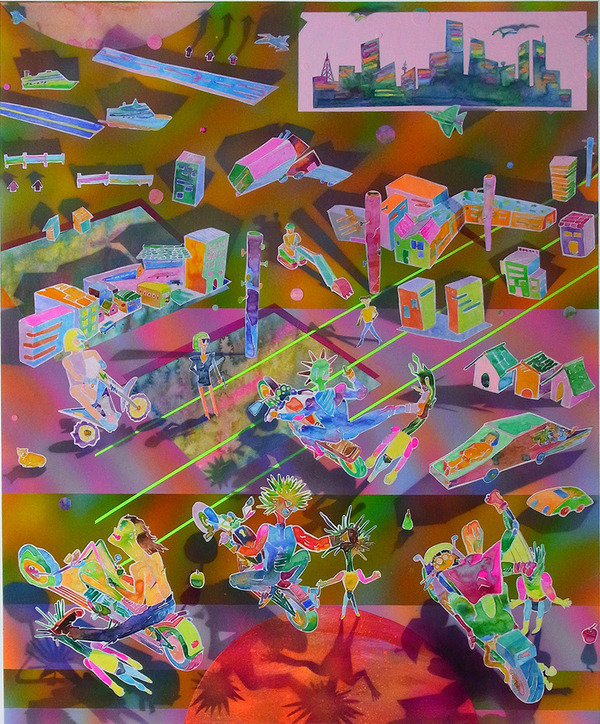Tai Ogawa
dal 8/11/2014 al 30/12/2014
Segnalato da
8/11/2014
Tai Ogawa
Kai Matsumiya, New York
Edge of Life at Kai Matsumiya. The show presents a series of works bold, colorful, and often violent or playful, all of which are removed between and among each other but unified by color and expression.

Kai Matsumiya presents Edge of Life by Tai Ogawa. The show will mark the artist’s US-debut exhibition. It will also be his first time in the United States.
Tai Ogawa (b. 1981) constantly reinvents his art practice for creating remarkable bodies of art work as a constant throughout his nearly decade long career, yet indubitably retains his consistent and identifiable signature style among all such works. Two bodies of art practrice investigate "atomization" and "borderlines" among other areas of art inquiry.
Profoundly bored by the limitations of flat, two dimensional surfaces, Tai’s newer works begin by the use of cut-out painted image-items, or what could be uncomfortably described as “collage” according to the artist. The inspiration for his change arrived from an edge-of-life motorcycle accident in Ibaraki, Japan -he fractured twenty ribs and remained unconscious for over a week.
Bright, colorful spray paint is employed for the background. Adhesive-based photo-paper cut in strips then are darted across the visual field in diagonals or horizontals, thereby instructing the implementations and pastings of collages. These image-items are bold, colorful, and often violent or playful, all of which are removed between and among each other but unified by color and expression.
All representations never interact. There is an absolute adherence to aesthetic validations, visual unity, and abstract narrative themes fixed in the spirit of captured moments (“Urban Legend”, “Ghoul”, “Cleaning Duty”, “Crime Scene”). These works represent borderlines, all in the narrative, logical, and ontological (sculpture, painting, installation) senses. Tai thus directly investigates borderlines and atomization, all of which derive from the spirit of "aesthetics trumping lifelessness" according to the artist.
Related, Ogawa’s second body of work to be displayed will be painted rocks resembling tombstones on display at the storefront window peering onto Stanton Street in the Lower East Side. There is an interpretive cultural reference with rocks and the act of gathering rocks in Japanese culture. Japanese Buddhist mythology tells a tale of a limbo-place specifically for children who die prematurely and thereby cause suffering to their parents. They are sent to sai no kawara, where children’s souls are trapped within small mountains of rocks and pebbles by the riverbed. In the hopes of climbing out of limbo into paradise, visitors prey for the lost children. Ogawa gathers such rocks as an act of defiance and immorality. He then paints the essence of each rock and pebble to allow the dignity of expression for the lost children and their parents, as opposed to such rocks and pebbles left in states without distinguishable character.
Opening Reception: Sunday, November 9th, 7-9:30 pm
Kai Matsumiya
153 ½ Stanton Street - New York, New York 10002
Tue – Sat 12- 8 pm



